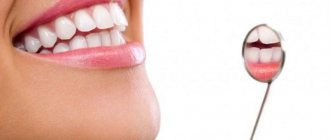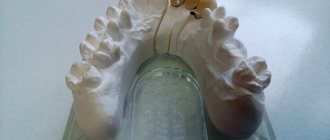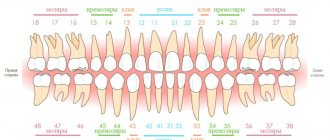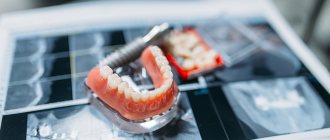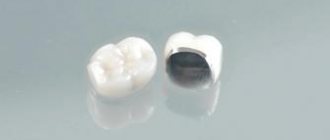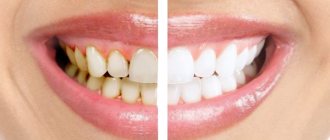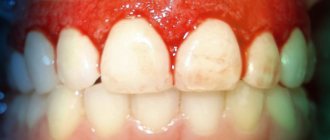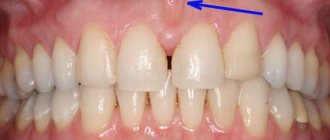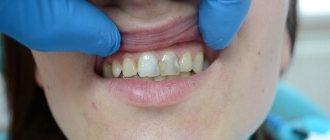What is a “dentist” like?
- good
- (more. )
Reference information on the declension of nouns and adjectives, verb conjugation, as well as the morphemic structure of words.
Who is a dentist?
Before dealing with narrow specializations, let’s consider who a dentist is in general. This is a doctor who has a higher education and has the right to carry out all types of dental treatment from therapeutic to prosthetics.
There are also dentists. Despite the fact that people call all dentists this way, in fact they are specialists with secondary specialized education. Their field of activity is dental treatment, but they do not have the right to undergo surgery.
In addition to dentists who work directly with patients, there is a dental technician. This specialist is engaged in the manufacture of prosthetics.
The second name of this specialist is odontologist. The main function of this doctor is to treat caries and its complications. The first thing you meet with a dental therapist is when you come to the dental clinic. He makes an initial examination and decides on treatment methods. His qualifications are sufficient to install fillings in carious cavities. During the filling process, the doctor examines each tooth individually in order not only to cure caries, but also to recognize other defects. He also treats gums and other inflammatory processes in the oral cavity. A dental therapist can diagnose the disease and select individual treatment or refer you to another specialist.
Dentist profession
A dentist has more authority regarding the conduct of medical procedures. Specialty training lasts 6 years, during which doctors master several important disciplines. Upon completion of training, the specialist is asked to choose one of the areas: therapist, surgeon, orthodontist, orthopedist or hygienist.
Comprehensive training is necessary in order to know the structure of the human body and be able to establish the relationship of one organ with another. The doctor also has to master the basics of psychology, since some patients come to the office in a depressed state, which aggravates the therapy.
Each category in dentistry should be considered in more detail.
In some cases, the dentist is unable to provide assistance to a small patient. This is due to several factors:
What is the difference between a dentist and a dentist: who is he and what does he do?
The word “dentist” is rarely used in our country; most often this is the name given to foreign specialists involved in the treatment of oral diseases. In the Russian-speaking environment, it is synonymous with the concept of “dentist”.
Orthopedic dentist - description of specialty
The name “orthopedic dentistry” was given to medical qualifications for the protection, restoration and prosthetics of the maxillofacial area. Sooner or later, every person needs to protect damaged tissue with a crown or prosthetics. The rating of dentists is opened by an orthopedist.
Situations in which the help of an orthopedist is needed:
- Tooth decay and loss. In this case, its function is restored by installing an artificial one.
- Protection from destruction. If only part of the bone tissue has been corroded, and the roots are intact and healthy, a crown is installed on such dental tissue, which stops further destructive process.
- The teeth are completely intact and healthy, but their appearance does not suit the owner. Installing ceramic plates will eliminate problems such as chips and scratches.
If the tooth tissue and root are healthy, then restoration is sufficient. Otherwise, prosthetics are performed. To determine what treatment plan is needed, the doctor conducts an examination, after which he makes a dental modeling in his laboratory. The orthopedist also deals with the correction of the appearance of the dental system, i.e. issues of aesthetic dentistry.
- Tooth decay and loss. In this case, its function is restored by installing an artificial one.
- Protection from destruction. If only part of the bone tissue has been corroded, and the roots are intact and healthy, a crown is installed on such dental tissue, which stops further destructive process.
- The teeth are completely intact and healthy, but their appearance does not suit the owner. Installing ceramic plates will eliminate problems such as chips and scratches.
What diseases does the dentist treat?
A general practitioner in dentistry treats the most common dental diseases:
- Caries. This is the process of destruction of hard tooth tissues under the influence of pathogenic bacterial flora present in the mouth. Characterized by demineralization and the formation of a carious cavity. The initial stages occur without pain. It is detected as a small dark spot on the enamel when examining the oral cavity. In the absence of timely dental treatment, pathology spreads to the dentin located under the enamel.
- Pulpitis. The disease consists of inflammation of the pulp, which is represented by connective tissue located under the dentin. The pulp includes vascular bundles and nerve endings that nourish and innervate the tooth. As a result of untreated caries, bacteria penetrate inside the tooth, causing inflammation of the pulp. The first sign of pulpitis is acute paroxysmal pain, intensifying at night, radiating to neighboring units, to the ear, and temple.
- Periodontitis is a complication of caries and pulpitis, in which the inflammatory process spreads to the periodontal tissue surrounding the tooth root. The main causes of periodontitis are: infection, trauma, potent drugs used in the treatment of pulpitis (formalin, arsenic). It can occur in acute and chronic forms, on which clinical symptoms depend.
- Periostitis (flux) is inflammation of the periosteum. Refers to a complication of dental diseases. Sometimes it develops as a result of a general inflammatory process in the body. Leading symptoms:
- toothache spreading to the area of the eye, ear, temple;
- swelling of the gums, spreading to the cheek and neck, causing facial asymmetry;
- hyperemia of the mucous membranes;
- pus on the gum near the sore tooth;
- soreness of nearby lymph nodes;
- hyperthermia;
- general weakness, others.
After the pus leaves the lesion, the symptoms weaken, but this does not mean that you can no longer seek help from a dentist, since the pathological process inside continues and can lead to undesirable consequences (phlegmon, osteomyelitis).
North-Eastern Dental Center No. 1 on Otradny provides a wide range of services in various areas of dentistry. Thanks to the high professionalism of our dental therapists, we treat teeth reliably, without pain, at reasonable prices. The clinic is equipped with advanced dental equipment and the best imported filling materials. You can make an appointment by calling 8 (499) 204 10 10, or leave a request on the website, we will call you back ourselves.
What types of dentists are there?
Prothodontists, orthodontists, or prosthetists work to create artificial teeth such as dentures, custom implants, and bridges. They can communicate with patients, participate in research and carry out orders related to the development of artificial teeth individually for each customer.
What are the responsibilities of such a specialist?
There are cases when teeth that normally perform chewing work look unattractive in appearance, causing awkwardness when communicating with others and emotional distress in a person. The problem can be solved with the help of veneers (overlay porcelain plates) that eliminate cosmetic defects (discoloration, shape) of the front teeth.
In one or two appointments, the orthopedist will use ceramic veneers to make your smile visually flawless and provide protection for the outer layer of the incisors. The service life of the linings is from 3 years, depending on the materials, installation method, and the skill of the doctor.
It is recommended to cover dental units that are weak in structure and susceptible to destruction with a crown to avoid the risk of their splitting and to prevent rapid deterioration. To prevent destruction and rapid loss of a damaged tooth, dentures are used to completely or partially restore it.
A high quality of life becomes impossible with excessively damaged, partially missing molars. Difficulty chewing food has a detrimental effect on the functioning of the gastrointestinal tract, causing diseases of the digestive system and other problems. In addition to the importance of the front incisors for aesthetic reasons, the role of other teeth is no less important: canines, premolars, molars. You should not consult a dentist if you have pain, the last stage of tooth decay, when the provision of orthopedic care becomes very difficult. If you lose any dental units (even distant ones), you need prosthetics to avoid stress on the teeth and their premature destruction.
The absence of molars as a result of periodontal damage, an accident, or in elderly people requires restoration of the dentition by an orthopedist using removable dentures. Such prosthetics were not an easy test for patients; the “false jaws” were bulky and uncomfortable. The materials for their manufacture (toxic and inelastic) did not fit well under the gums, often causing an allergic reaction, rubbing, and irritation of the soft tissues of the mouth.
Modern materials used for crowns and bridges do not wear out and last for many years (as a rule, they should be changed after 7 years), unless oral problems arise: weakening of the periodontium, exposure of the neck of the tooth, infection and inflammation of the root.
The durability and strength of crowns depends on the material:
- metal (steel, titanium, gold, platinum),
- metal ceramics (metal base with ceramic coating),
- ceramics with the addition of zirconium dioxide for strength,
- plastic can be used for temporary crowns.
When installing crowns, the root remains alive, the crown part of the tooth is corrected, the method is cheaper than implantation, which is the advantage of crowns. Disadvantages of restoring a tooth with a crown: the need to file the main and adjacent teeth, the risk of inflammation and tooth destruction in case of unsuccessful prosthetics.
If several dental units are lost in a row, a bridge (cast, metal-ceramic or ceramic) is made, which is placed on the supporting teeth. Bridges are durable and affordable, but, unfortunately, you have to file down the supporting teeth.
Fully or partially removable dentures are used to restore chewing function in the absence of a dental row.
Several dentists of different specializations are involved in the process of prosthetics.
According to the job description, the orthopedist is obliged to:
- prescribe an examination, select a treatment method,
- select a design and material for it (to be agreed with the patient),
- familiarize the patient with the treatment plan (indicating the dates of the visit, the production time of the product planned by the dental laboratory).
- try on, adjust and correct the finished product:
- install and fix a crown, bridge, prosthesis,
- remove the prosthesis if necessary, assess its condition,
- give recommendations to the patient on how to care for the structure.
In the manufacture of prosthetics, modern orthopedics uses special computer programs and the latest materials and innovative methodological developments.
Defects and anomalies of dental units that do not allow a person to chew fully, smile freely, or talk can seriously poison a person’s life: give rise to a lot of complexes and bring physical and moral suffering. Prosthetics is a dental service in any country in the world. The variety of dental services is complemented by the development of techniques and materials used.
Introduction
The vast majority of dentists are general practitioners, that is, therapists or simply dentists.
They perform routine examinations, routinely diagnose patients, perform root canals, and install fillings. These specialists should also be contacted if you need to install dentures, crowns and bridges. They will prepare the patient for surgery, which will be performed by the surgeon. Some of the dentists perform procedures in the field of cosmetic dentistry. Dental therapists are qualified to treat patients of all ages. Other professionals work in certain specialized areas.
What is the name of a dentist?
Modern dentistry provides a range of services, so today there are more and more different specializations in this field.
Dental professions:
- Dentist;
- dentist;
- orthopedist;
- orthodontist.
In this article we will discuss each specialization separately. You will learn: what is the name of the doctor who inserts teeth, and also whether a dentist has the right to remove teeth, which doctor treats stomatitis, and much more.
Dental professions:
Who is a dentist?
Dentist is a unifying definition applied to a dental specialist with higher education. (Stoma, stomatos means mouth in Greek, logos – teaching). To become a dentist, you need to graduate from a medical academy, institute or university.
The duration of their studies is at least 5 years. Along with dental diseases, future dentists study many medical sciences - biochemistry, physiology, therapy, histology, etc.
They are prepared not only theoretically, but also practically, having completed a one-year internship or a 2-year residency.
Narrower specializations
The large number and complexity of pathologies of the dentofacial apparatus, the constant improvement of existing treatment technologies and the development of new ones require in-depth, specific knowledge and skills from dentists.
This feature has found its implementation in the concept of narrow specialization of dentists.
Depending on the type of work performed, the following specializations of dentists differ:
- therapist;
- orthodontist;
- surgeon;
- orthopedist;
- hygienist;
- pediatric dentist.
Dentists often combine several specializations at once.
Dental surgeon
The prerogative of the profession of a dental surgeon is the following operations:
- Dental surgeons often treat diseases that are within the competence of dentists of other specialties
tooth extraction;
- treatment of neoplasms in the PR;
- elimination of TMJ dysfunctions, diseases of the salivary glands and trigeminal nerve;
- primary treatment of wounds and injuries of the mouth, neck, face;
- plastic surgery and reconstruction of jaw bones;
- operations on periodontal tissues (gingivectomy, gum pocket removal, soft tissue transplantations, gingivoplasty, plastic surgery of the oral vestibule and frenulum);
- correction of tooth position anomalies.
- implantation.
Dental surgeons often treat diseases that are within the competence of dentists of other specialties: phlegmon, periodontitis, sinusitis, periostitis, abscesses, osteomyelitis.
They also diagnose specific diseases, the symptoms of which may appear in the PR - syphilis, tuberculosis, actinomycosis.
Dentist-therapist
Typically, patients who seek help from a dentist first see a therapist.
Dental therapist is the broadest specialization in dentistry.
Typically, patients who seek help from a dentist first see a therapist, who in most cases is able to deal with their problem alone.
The job description of a dental therapist provides for the following work:
- examination of the oral cavity;
- diagnosing;
- treatment of teeth (caries, pulpitis, etc.) and periodontal disease (gingivitis, periodontitis, periodontal disease, periodontitis);
- preparation of PR for prosthetics, its sanitation;
- teeth whitening and PG;
- preventive examination and advice on caring for RP.
When pathologies are identified that urgently require the participation of a specialist doctor, the therapist refers the patient to them.
Orthopedist
An orthopedist restores teeth using prosthetics
A doctor of this specialization is engaged in the restoration of dilapidated, missing or lost aesthetic teeth using prosthetics.
Orthopedist:
- takes impressions of teeth, from which the dental technician subsequently makes a prosthesis;
- tries on, adjusts and secures the prosthesis on the patient.
Prosthetic structures include crowns, bridges, inlays, veneers, and removable dentures.
Orthodontist
The orthodontist adjusts the position of teeth using removable and non-removable orthodontic devices
Orthodontics is a subsection of dentistry dedicated to dental anomalies.
The scope of practice of an orthodontist includes:
- prevention of deformations of individual teeth, dentition and jaws;
- normalization of occlusion;
- correction of jaw development;
- teeth straightening.
Correction of the position of teeth is carried out using removable and non-removable orthodontic devices - mouthguards, braces, braces.
Children's teeth at the stage of formation and growth are most successfully corrected. In adults, this process is much more difficult.
General dentist
The specialty “General Dentistry” was introduced by orders of the Ministry of Health No. 553 and 112. This specialty is of particular importance for rural areas, where it is desirable to have a specialist who can provide assistance in several clinical areas.
However, until now, due to a number of organizational, educational and legal problems, general practice in dentistry has not received proper development.
Children's
Children and adolescents under the age of 17 are patients of the pediatric dentist.
A child's teeth have many differences from adult teeth. This includes the presence of baby teeth, the constant renewal and formation of the dentofacial apparatus, and the inability to use certain anesthetics for children.
And the reaction of children to the dental chair creates increased problems.
A dentist treating children must not only be able to distinguish pathology from the age norm, detect deviations in bite and tooth formation in time, but also be a bit of a psychologist.
Hygienist
The goal of a hygienist is to prevent dental diseases
Dental hygienist is a relatively new specialization in dentistry.
Its goal is the prevention of dental diseases, its field of activity is dental hygiene, proper dental care.
A dental hygienist performs the following work:
- diagnosing RP diseases;
- professional teeth cleaning;
- disease prevention;
- training in proper dental care skills;
- educational activities (inspections in kindergartens, schools, institutions, organizations, enterprises).

